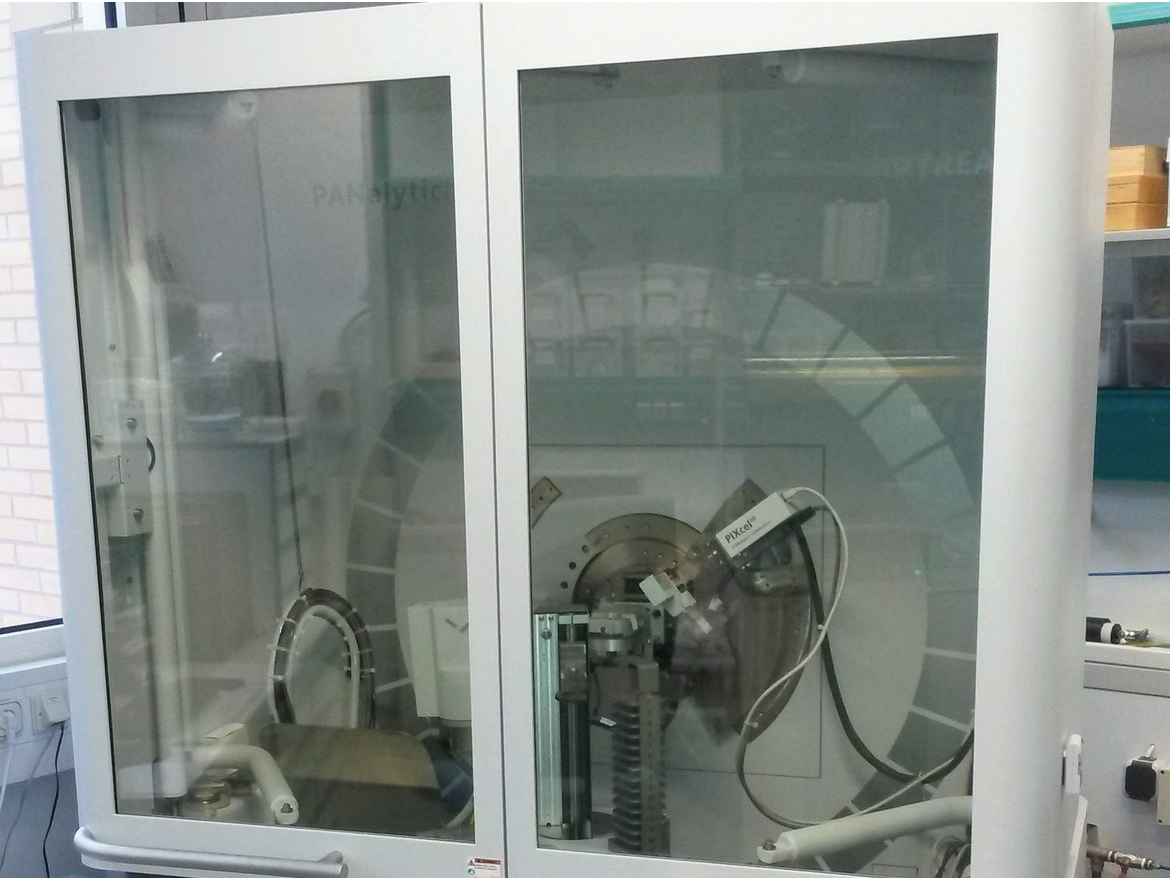X-Ray Powder Diffraction Analysis (XRD)
Contact:
Web:
Infrastructure belongs to:
An X-Ray Diffraction analysis is a method in which a beam of X-Rays is usually directed at a fine powder of randomly oriented grains of crystalline substances. The X-Rays are scattered in directions that depend on the crystal structure of the sample and the resulting X-Ray diffraction pattern can uniquely identify the material. The method is used to identify individual minerals in randomly oriented bulk rock powder samples (grain sizes < 62 μm for qualitative analysis, < 10 μm for quantitative analysis), or in oriented samples (size fraction < 2 μm for clay mineralogy analysis).
The XRD Lab operates a PANalytical Empyrean X-Ray Diffractometer, which is additionally equipped with a humidity chamber that enables (in situ) XRD analysis of rocks during changing temperature and/or humidity. The XRD Lab is associated to the ElMiE Lab. Information on how to apply for analyses and the general terms and conditions can be found here and here.
For special X-Ray diffraction analysis the powder X-Ray diffractometer STOE StadiP can be used. This powder X-Ray diffractometer (XRD) consists of two individual instruments capable of X-Ray scattering analysis using both Cu (λ=1.54 Å) and Ag radiation (λ=0.56 Å) in transmission geometry. The XRD can be used to analyze both crystalline and amorphous samples by measuring either conventional diffraction patterns or high Q-range total scattering patterns for pair distribution function (PDF) analysis. Measurements can be performed in room or elevated temperature up to 800 °C. The Powder X-Ray diffractometer STOE StadiP is part of the Environmental Mineralogy and Biogeochemistry Labs in Section 3.5 "Interface Geochemistry".
Categories
Disciplinary Keywords
Instrumentation
Laboratory instrumentation
Instrument
-
X-Ray Powder Diffractometer
An x-ray powder diffractometer is primarily used for the identification of phases in powder form. An x-ray beam of known wavelength is focused on a powdered sample and x-ray diffraction peaks are measured using a germanium detector; the d-spacing of the observed diffraction peaks is calculated using Bragg's Law [n*lamda = 2dsin(theta)]. The Scintag Pad V automated powder diffractometer uses a Cu x-ray tube with variable filters, a four-sample changer, and a low-noise, high efficiency, liquid-nitrogen cooled germanium detector. The goniometer is automated and software packages are run from a PC running Windows NT 4. A number of Scintag software packages are available for routine powder diffraction data acquisition, background correction and peak identification. Unknowns can be matched to JCPDS cards in an on-line database. Other software is available for quantitative analysis of powder mixtures, unit cell refinement, Rietveld analysis, and GSAS structural analysis. Samples sho uld be prepared as powders with a grain size of 10 um (approximately), and typically about 100 milligrams of sample is required. Additional information available at "http://www.gps.caltech.edu/facilities/analytical/xrd.html" [Summary provided by Caltech] (Source: Global Change Master Directory (GCMD). 2023. GCMD Keywords, Version 16.3. Greenbelt, MD: Earth Science Data and Information System, Earth Science Projects pision, Goddard Space Flight Center (GSFC) National Aeronautics and Space Administration (NASA). URL (GCMD Keyword Forum Page): https://forum.earthdata.nasa.gov/app.php/tag/GCMD+Keywords)
